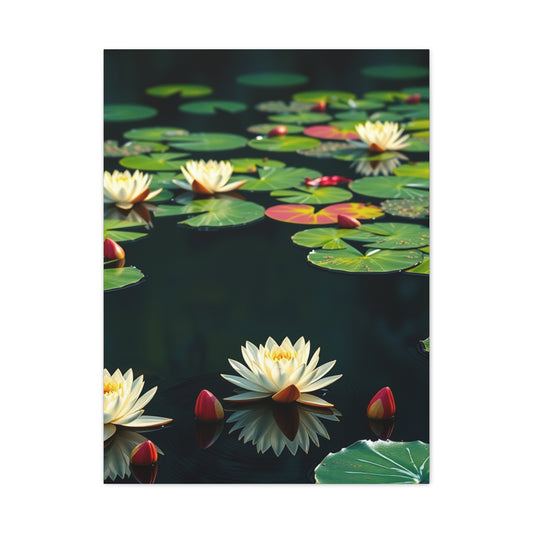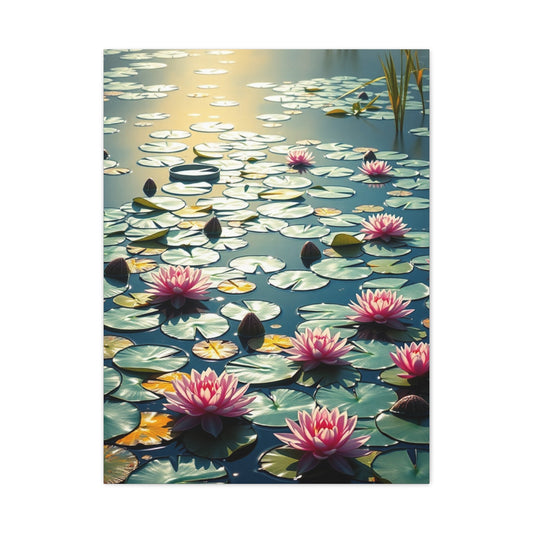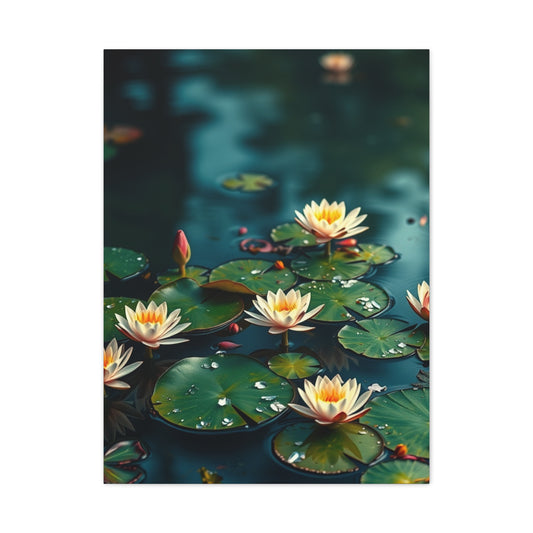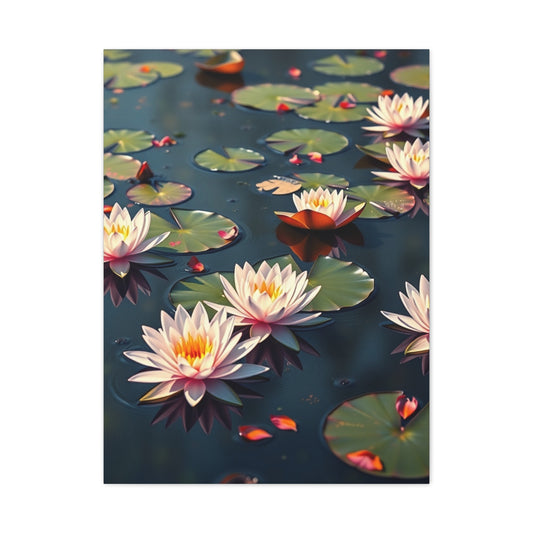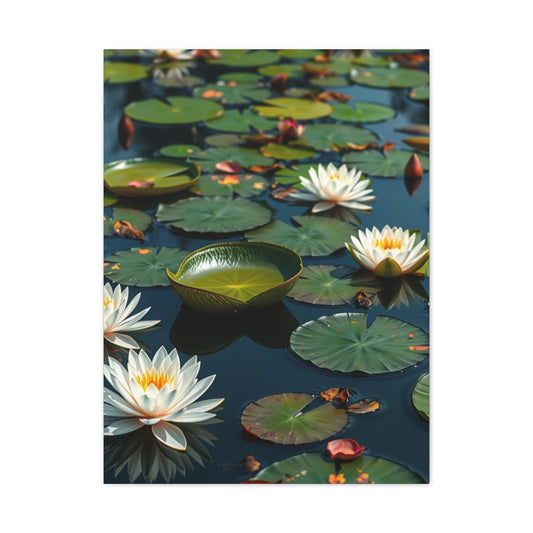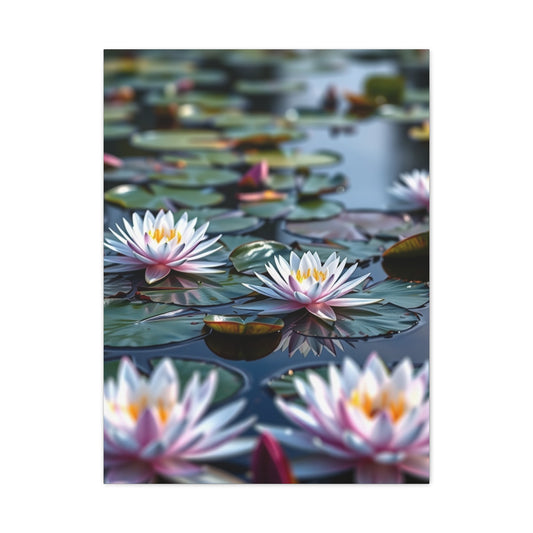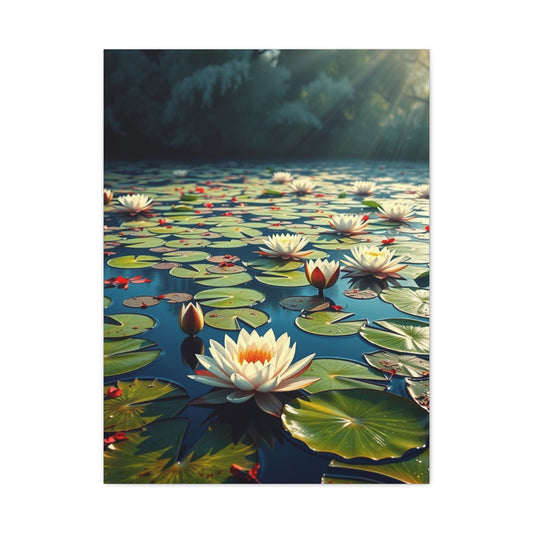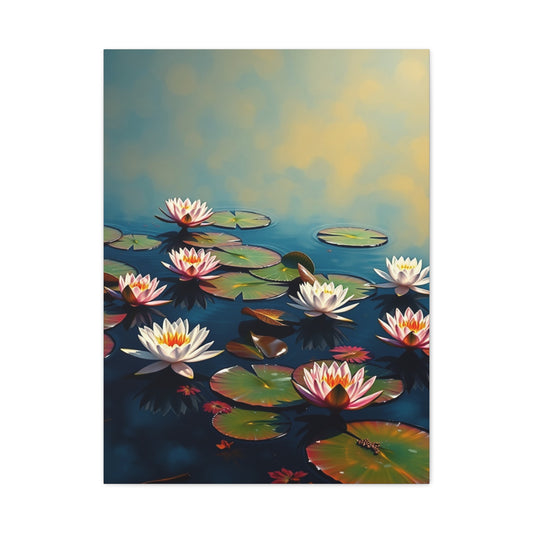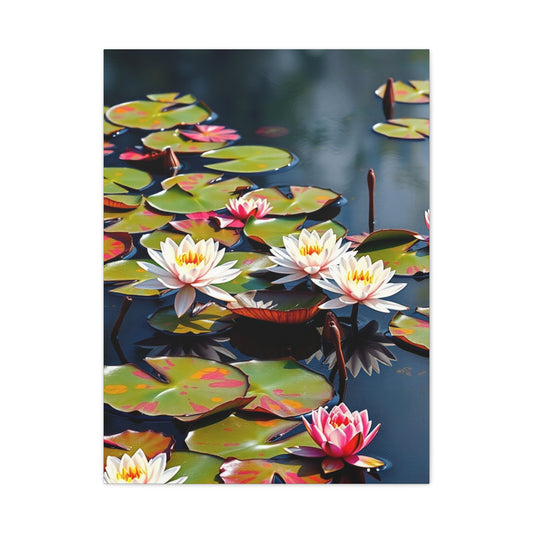-
Masterpiece Claude Monet Water Lilies Art Vision Wall Art & Canvas Print
Regular price From $141.23 USDRegular priceUnit price per -
Claude Monet Water Lilies Art Refined Canvas Wall Art & Canvas Print
Regular price From $141.23 USDRegular priceUnit price per -
Collection Claude Monet Water Lilies Art Art Wall Art & Canvas Print
Regular price From $141.23 USDRegular priceUnit price per -
Supreme Claude Monet Water Lilies Art Collection Wall Art & Canvas Print
Regular price From $141.23 USDRegular priceUnit price per -
Vision Claude Monet Water Lilies Art Art Wall Art & Canvas Print
Regular price From $141.23 USDRegular priceUnit price per -
Elite Claude Monet Water Lilies Art Vision Wall Art & Canvas Print
Regular price From $141.23 USDRegular priceUnit price per -
Claude Monet Water Lilies Art Supreme Canvas Wall Art & Canvas Print
Regular price From $141.23 USDRegular priceUnit price per -
Claude Monet Water Lilies Art Supreme Gallery Wall Art & Canvas Print
Regular price From $141.23 USDRegular priceUnit price per -
Claude Monet Water Lilies Art Luxury Canvas Wall Art & Canvas Print
Regular price From $141.23 USDRegular priceUnit price per
Water Lilies by Claude Monet: An In-Depth Journey Through Impressionist Wall Art
Claude Oscar Monet emerged as one of history's most transformative painters, fundamentally altering how humanity perceives and captures visual reality. Born on November 14, 1840, in the bustling metropolis of Paris, his formative years unfolded along the windswept coastlines of Le Havre in Normandy. This coastal environment, with its ever-changing atmospheric conditions and maritime influences, would profoundly shape his artistic sensibilities and lifelong fascination with natural phenomena.
From his earliest years, Monet demonstrated an exceptional aptitude for visual observation and artistic expression. Unlike many of his contemporaries who received formal academic training in sterile studio environments, Monet gravitated toward outdoor painting, developing what would become known as plein air techniques. This approach involved working directly from nature, capturing immediate impressions rather than labored studio compositions.
His revolutionary vision challenged the established artistic hierarchy of his era, which prioritized historical, religious, and mythological subjects rendered in meticulous detail. Instead, Monet championed the beauty of everyday scenes, ordinary moments, and natural landscapes. This philosophical shift represented more than mere stylistic preference; it embodied a fundamental reimagining of art's purpose and potential.
The young artist's rebellious spirit manifested in his rejection of traditional academic methods that emphasized precise drawing, careful modeling, and smooth finish. Monet embraced visible brushstrokes, bold color combinations, and compositional spontaneity. These characteristics would eventually define the impressionist movement, though initially they provoked harsh criticism from established art critics and institutions.
The Birth and Evolution of Impressionist Philosophy
The impressionist movement, which Monet helped pioneer, represented a seismic shift in artistic consciousness during the latter half of the nineteenth century. This revolutionary approach to painting emerged from a confluence of scientific discoveries, social changes, and artistic innovations that transformed how artists understood light, color, and perception.
Scientific advancements in optics and color theory profoundly influenced impressionist painters. The work of scientists like Michel Eugène Chevreul and his studies on simultaneous contrast provided theoretical foundations for new approaches to color mixing and application. Rather than blending pigments on palettes to achieve desired hues, impressionists began applying pure colors directly to canvas, allowing optical mixing to occur in the viewer's eye.
Photography's emergence also challenged traditional painting's documentary function. With cameras capable of capturing precise visual records, painters found themselves freed from purely representational obligations. This liberation encouraged artists like Monet to explore painting's unique capabilities for expressing subjective experience and emotional response to visual stimuli.
The impressionist philosophy embraced spontaneity, immediacy, and personal interpretation over academic perfection. Painters sought to capture fleeting moments, transient lighting conditions, and atmospheric effects that conventional techniques could not adequately represent. This pursuit of the ephemeral required new methods, materials, and mindsets that fundamentally altered artistic practice.
Monet's contribution to this philosophical revolution extended beyond technical innovations. He demonstrated that ordinary subjects could possess extraordinary beauty when viewed through sensitive artistic perception. His paintings of haystacks, poplar trees, and cathedral facades revealed hidden complexities and emotional depths in seemingly mundane subjects.
The Sanctuary at Giverny: Creating an Artistic Paradise
In 1883, at age forty-three, Claude Monet made a decision that would profoundly impact his artistic legacy. He rented, and later purchased, a property in the small village of Giverny, located in the Seine valley approximately fifty miles northwest of Paris. This modest dwelling would become far more than a residence; it evolved into an artistic laboratory where Monet would conduct his most ambitious visual experiments.
The property initially consisted of a pink house with green shutters, surrounded by two acres of land. However, Monet's vision extended far beyond these humble beginnings. He envisioned creating a living masterpiece, a three-dimensional composition that would serve simultaneously as home, studio, and subject matter for his paintings.
With characteristic determination and artistic precision, Monet began transforming the grounds into an elaborate garden complex. He divided the space into two distinct sections: a flower garden adjacent to the house, featuring geometric beds filled with vibrant blooms, and a water garden across the railway line that bordered his property. This second section would become the birthplace of his most celebrated series.
The water garden's creation required considerable engineering and horticultural expertise. Monet diverted a stream from the nearby River Epte, creating an intricate network of ponds and waterways. He carefully controlled water levels, flow rates, and aquatic plant populations to achieve specific visual effects. Every element, from the placement of water lilies to the positioning of weeping willows, was orchestrated with painterly consideration.
The garden's design reflected Monet's deep understanding of Japanese aesthetics, particularly as expressed in woodblock prints he collected and admired. The famous Japanese bridge, with its distinctive curved profile and later covering of wisteria vines, became an iconic element that appeared in numerous paintings. This fusion of Western and Eastern design principles created a unique environment that satisfied both horticultural and artistic ambitions.
Seasonal changes transformed the garden throughout the year, providing Monet with an ever-evolving subject matter. Spring brought delicate blossoms and fresh green foliage, summer offered lush growth and brilliant flowers, autumn contributed warm colors and interesting light effects, and winter revealed structural elements and subtle tonal variations. This temporal dimension allowed Monet to explore the same compositional elements under vastly different conditions.
The garden's maintenance required considerable resources and constant attention. Monet employed several gardeners and developed detailed cultivation plans to ensure optimal growing conditions for his chosen plants. He imported rare species, experimented with color combinations, and carefully timed plantings to achieve desired blooming sequences. This horticultural expertise rivaled his painterly skills in complexity and sophistication.
The Conception and Creation of the Water Lilies Series
The Water Lilies series, comprising approximately 250 paintings created over three decades, represents one of art history's most ambitious and sustained artistic investigations. This monumental body of work emerged gradually from Monet's daily interaction with his water garden at Giverny, evolving from isolated studies into a comprehensive exploration of light, reflection, and aquatic beauty.
The series' origins can be traced to the mid-1890s, shortly after Monet completed his water garden construction. Initially, these aquatic subjects represented just one element in his broader exploration of garden motifs. However, the pond's visual richness and constant variation quickly captured his imagination in unprecedented ways. The interplay between water surface and submerged vegetation, the reflection of sky and surrounding foliage, and the subtle movements of floating blossoms created a complex visual symphony that demanded sustained attention.
Monet's approach to the Water Lilies differed significantly from his earlier series work. While paintings like the Haystacks or Rouen Cathedral series explored the same subjects under varying lighting conditions, the Water Lilies presented additional variables: seasonal plant growth, water level fluctuations, and the ephemeral nature of floating flowers. These factors created an almost infinite range of compositional possibilities within the pond's confined space.
The artist developed specific working methods to capture the pond's transient effects. He often painted from a small boat moored in the water, allowing him to achieve intimate proximity to his subject matter. Multiple easels stationed around the pond's perimeter enabled him to work on several canvases simultaneously, moving between compositions as lighting conditions changed throughout the day.
Weather played a crucial role in determining painting sessions and artistic outcomes. Calm days produced clear reflections and stable compositions, while breezy conditions created surface ripples that fragmented reflected images. Overcast skies provided even illumination ideal for color studies, while bright sunshine created dramatic contrasts and bold shadows. Each meteorological condition offered unique interpretive opportunities.
The physical act of painting water lilies presented numerous technical challenges. The constant movement of floating blossoms required rapid execution and compositional flexibility. Reflected images shifted continuously as viewing angles changed, demanding quick decision-making about which effects to capture and which to ignore. The pond's surface acted as both subject and mirror, creating layers of visual information that needed careful orchestration.
The Role of Light in Aquatic Representation
Light serves as the primary protagonist in Monet's Water Lilies paintings, determining mood, composition, and color relationships with unprecedented authority. The artist's lifelong fascination with luminous effects reached its culmination in these aquatic studies, where reflected light created complex visual phenomena that challenged conventional representation methods.
Morning light in the water garden produced effects that Monet found particularly compelling. The low angle of early sun created long shadows and warm color temperatures that transformed the pond's appearance dramatically. Water surfaces acted as mirrors, doubling the intensity of reflected sky colors while simultaneously revealing submerged vegetation through transparent areas. This dual function of water as both reflective and transmissive medium provided rich material for artistic exploration.
Midday illumination presented different challenges and opportunities. High sun positions eliminated dramatic shadows but created brilliant surface reflections that could overwhelm subtle color variations. Monet learned to use these conditions for paintings emphasizing bold contrasts and simplified color schemes. The intense light bleached delicate tones while intensifying saturated hues, creating compositions of remarkable visual power.
Evening sessions offered yet another set of lighting phenomena. As daylight faded, artificial illumination from the house and garden lanterns began influencing pond appearance. These mixed lighting conditions created complex color temperatures and unusual shadow patterns that appeared in some of Monet's most experimental compositions.
Seasonal variations in light quality profoundly affected the Water Lilies' visual character. Spring light, filtered through delicate new foliage, created soft, diffused illumination ideal for capturing subtle color nuances. Summer's intense brightness required different approaches, often emphasizing bold contrasts and dramatic shadows. Autumn light, warmed by atmospheric moisture and dust, lent golden tones to reflection and surface effects.
Weather conditions introduced additional variables into lighting equations. Overcast days provided even illumination that revealed color relationships clearly but eliminated dramatic contrasts. Partly cloudy conditions created rapidly changing light patterns that challenged Monet's ability to work quickly while maintaining compositional coherence. Storm light produced dramatic effects but limited working time to brief intervals between rain showers.
The artist developed various strategies for managing these complex lighting conditions. He often worked on multiple canvases simultaneously, moving between compositions as lighting changed throughout painting sessions. This approach allowed him to capture optimal conditions for each work while avoiding the frustration of waiting for specific effects to return.
Color Theory and Palette Evolution
The Water Lilies series showcases Monet's sophisticated understanding of color theory and his continuous experimentation with palette choices throughout his career. His approach to color in these aquatic paintings evolved from relatively conventional beginnings to radical innovations that anticipated abstract expressionist developments decades later.
Early Water Lilies paintings employed palettes dominated by naturalistic colors that corresponded closely to observed phenomena. Blues represented water and sky, greens depicted vegetation, and earth tones suggested pond bottoms and shoreline elements. However, even these early works demonstrated Monet's willingness to exaggerate color relationships for expressive purposes.
As the series progressed, Monet's color choices became increasingly bold and subjective. He discovered that water's reflective properties allowed him to introduce colors that would seem unnatural in other contexts. Purple shadows, orange reflections, and pink atmospheric effects appeared with increasing frequency, justified by the complex optical phenomena occurring in aquatic environments.
The artist's understanding of color temperature played a crucial role in creating convincing water representations. He recognized that reflected colors often appeared warmer or cooler than their sources, depending on viewing angles and atmospheric conditions. This knowledge enabled him to create subtle temperature contrasts that enhanced spatial depth and atmospheric believability.
Complementary color relationships became increasingly important in later Water Lilies paintings. Monet frequently juxtaposed orange and blue, red and green, or yellow and violet to create visual vibrations that suggested water movement and light scintillation. These color combinations, applied with broken brushwork, created optical mixing effects that enhanced paintings' luminous qualities.
The influence of Japanese art on Monet's color sensibilities became evident in many Water Lilies compositions. The subtle gradations and unexpected color combinations found in Japanese woodblock prints encouraged him to explore palette choices that Western artistic traditions might have considered inappropriate or unnatural.
Scientific color theory, particularly the work of Michel Eugène Chevreul and Ogden Rood, provided theoretical foundations for Monet's empirical discoveries. However, the artist's approach remained primarily intuitive, guided more by visual observation than academic principles. This balance between scientific understanding and artistic intuition produced color relationships of remarkable sophistication and emotional impact.
The Influence of Japanese Aesthetics
Japanese artistic principles profoundly influenced Monet's approach to the Water Lilies series, contributing to compositional innovations and aesthetic sensibilities that distinguished these works from earlier European landscape traditions. The artist's extensive collection of Japanese woodblock prints provided continuous inspiration for new approaches to space, color, and subject matter.
The concept of cropping, fundamental to Japanese printmaking, appeared frequently in Water Lilies compositions. Rather than presenting complete, enclosed scenes with clear boundaries, many paintings suggested continuation beyond frame edges. This approach created more dynamic compositions and encouraged viewers to imagine aquatic expanses extending infinitely in all directions.
Asymmetrical balance, another key principle of Japanese design, replaced the symmetrical compositions favored by Western academic traditions. Monet learned to distribute visual weight irregularly across his canvases, creating more naturalistic and visually interesting arrangements. This approach proved particularly effective for water lily compositions, where floating blossoms rarely arranged themselves symmetrically.
The Japanese aesthetic principle of simplicity influenced Monet's increasingly reductive approach to pond imagery. Later Water Lilies paintings eliminated extraneous details, focusing exclusively on essential elements: water, light, and vegetation. This distillation process intensified emotional impact while reducing visual complexity.
Color relationships in Japanese prints encouraged Monet to explore unexpected palette combinations. The subtle gradations and harmonious contrasts found in woodblock prints provided models for achieving similar effects in oil painting. This influence became particularly evident in paintings dominated by pink, lavender, and pale green color schemes.
The Japanese concept of capturing seasonal essence rather than specific moments aligned perfectly with Monet's artistic goals. Rather than documenting particular days or hours, he sought to convey the fundamental character of seasons as experienced in aquatic environments. This approach emphasized universal qualities over specific incidents.
Perspective conventions in Japanese art offered alternatives to Western linear perspective systems. Monet adopted high viewpoints and flattened spatial relationships that eliminated traditional foreground, middle ground, and background distinctions. These compositional strategies proved particularly effective for water surface representations.
The Large-Scale Decorative Paintings
The culmination of Monet's Water Lilies exploration manifested in his monumental decorative paintings, conceived as environmental installations that would surround viewers with aquatic imagery. These large-scale works, measuring up to six feet in height and extending to lengths exceeding forty feet, represented a radical departure from conventional easel painting traditions.
The conception of these decorative panels emerged from Monet's desire to create immersive viewing experiences that would transport observers into aquatic environments. Rather than presenting water lilies as distant landscape elements viewed through window-like frames, these expansive compositions eliminated boundaries between artwork and viewer, creating sensation of floating within pond environments.
Working on such massive scales presented numerous technical challenges. Monet's aging eyesight, compromised by developing cataracts, made precise detail work increasingly difficult. However, this limitation paradoxically contributed to the paintings' success by encouraging broader, more expressive brushwork that enhanced their atmospheric qualities. The physical demands of working on large canvases required modified studio arrangements and painting techniques.
The artist constructed a special studio at Giverny to accommodate these ambitious projects. This large, well-lit space allowed him to work on multiple panels simultaneously while maintaining overall compositional relationships. The studio's design enabled him to step back from individual sections and evaluate their effectiveness within larger decorative schemes.
Color relationships in the large decorative paintings required careful orchestration across extended horizontal dimensions. Monet developed strategies for maintaining visual coherence while allowing individual sections to possess their own character and interest. This balance between unity and variety required sophisticated understanding of color theory and compositional principles.
The brushwork in these monumental paintings reveals Monet's late style at its most expressive and confident. Individual brush strokes became increasingly visible and important as compositional elements in their own right. This emphasis on paint application as expressive medium anticipated developments in twentieth-century abstract painting.
Installation considerations influenced compositional decisions throughout the decorative paintings' creation. Monet envisioned these works displayed in curved arrangements that would surround viewers completely, eliminating sharp corners that might interrupt visual flow. This environmental approach required careful attention to edge relationships and transitional passages between individual panels.
Scientific Approaches to Natural Observation
Monet's approach to painting water lilies incorporated systematic observation methods that paralleled scientific investigation techniques. His careful documentation of changing light conditions, seasonal variations, and atmospheric phenomena demonstrated commitment to empirical accuracy that complemented his artistic intuitions.
The artist maintained detailed records of weather conditions, painting sessions, and seasonal changes that influenced pond appearance. These notes provided reference material for understanding how environmental factors affected visual phenomena and artistic outcomes. This documentation revealed patterns and relationships that might otherwise have been overlooked.
Monet's working methods included simultaneous studies of the same subject under different conditions, an approach similar to controlled scientific experiments. By maintaining multiple canvases depicting identical or similar compositions, he could isolate variables like time of day, weather conditions, or seasonal factors to understand their individual influences on visual effects.
The series format itself represented a scientific approach to artistic investigation. Rather than creating isolated works, Monet developed comprehensive studies that explored subjects exhaustively. This systematic methodology ensured that important visual phenomena would not be missed and that relationships between different conditions could be understood clearly.
Time-based studies within the Water Lilies series demonstrated Monet's interest in temporal phenomena that conventional single paintings could not address adequately. By creating sequences of works depicting the same subjects at different times, he documented processes and changes that occurred over hours, days, or seasons.
The artist's attention to atmospheric optics reflected contemporary scientific understanding of light behavior and atmospheric phenomena. His paintings accurately depicted complex optical effects like scattering, refraction, and reflection that were being studied by physicists and meteorologists during the same period.
Monet's empirical approach to color relationships anticipated developments in color science and psychology. His observations about how colors appeared to change under different viewing conditions and in various contexts prefigured scientific investigations into color perception and optical phenomena.
The Intersection of Art and Horticulture
Monet's creation and maintenance of his water garden at Giverny represented a unique fusion of artistic vision and horticultural expertise. His approach to garden design demonstrated that he understood plants not merely as painting subjects but as living sculptural elements that could be orchestrated to achieve specific visual effects.
The selection of water lily varieties for the pond reflected careful consideration of color, blooming schedule, and growth characteristics. Monet cultivated both hardy and tropical species, ensuring continuous flowering throughout the growing season. Different varieties provided white, pink, yellow, and pale blue blossoms that appeared in paintings as carefully planned color accents.
Plant placement within the pond followed artistic rather than purely horticultural logic. Monet positioned water lilies to create pleasing compositional arrangements when viewed from his preferred painting locations. This approach required understanding how plants would develop over time and how seasonal changes would affect overall garden appearance.
The maintenance of optimal growing conditions demanded constant attention and considerable resources. Water quality, nutrient levels, and plant health directly influenced the garden's visual character and suitability as subject matter for paintings. Poor growing conditions could eliminate entire painting seasons if plants failed to thrive.
Monet's horticultural knowledge extended beyond water plants to include understanding of how surrounding vegetation would affect pond appearance. Trees and shrubs were selected and positioned to provide desired reflection patterns and light filtering effects. This comprehensive approach to garden design created unified environments that supported artistic goals.
The seasonal management of aquatic plants required sophisticated planning and timing. Monet coordinated planting, fertilizing, pruning, and harvesting schedules to ensure optimal pond appearance during his most productive painting periods. This temporal orchestration demanded both horticultural skill and artistic foresight.
The introduction of exotic species and experimental varieties demonstrated Monet's willingness to take risks in pursuit of new visual effects. He imported plants from different climatic regions and tested their adaptability to his garden conditions. Successful introductions expanded his palette of natural colors and forms.
Photographic Documentation and Artistic Reference
The development of photography during Monet's lifetime provided new tools for documenting garden changes and analyzing visual effects that influenced his painting methods. While he never abandoned direct observation as his primary working method, photographic records served as valuable supplements to memory and visual notes.
Early garden photographs reveal the systematic development of Monet's aquatic paradise from simple pond to complex aquatic environment. These images document plant growth, structural additions, and seasonal changes that occurred over decades of garden evolution. Comparing photographs with contemporary paintings reveals how Monet interpreted photographic information through artistic sensibilities.
The artist's use of photography differed significantly from literal copying or mechanical reproduction. Instead, he employed photographic documentation as reference material that could refresh memory and provide information about details that might be overlooked during painting sessions. This supplementary role preserved the primacy of direct observation while adding useful documentation capabilities.
Photographic studies of light effects and atmospheric conditions provided reference material for understanding complex optical phenomena. Time-lapse photography could document changes that occurred too slowly for direct observation, while instantaneous photography could freeze effects that changed too rapidly for careful study.
The limitations of early photographic technology actually supported Monet's artistic goals by providing simplified tonal records that emphasized major compositional relationships over minute details. Black and white photographs eliminated color distractions and focused attention on value patterns and structural elements.
Family photographs and visitor snapshots provide glimpses of Monet working in his garden environment. These informal records reveal his painting methods, preferred locations, and working conditions that influenced artistic outcomes. Such documentation helps contemporary viewers understand the practical aspects of creating the Water Lilies series.
International Recognition and Critical Reception
The Water Lilies series gradually gained international recognition as Monet's reputation spread beyond French borders. Critical reception evolved from initial puzzlement and occasional hostility to widespread acclaim and acknowledgment of the works' revolutionary significance in art history.
Early exhibitions of Water Lilies paintings met with mixed reactions from critics and public audiences. Many viewers found the works' lack of traditional subject matter and compositional conventions difficult to understand or appreciate. The absence of narrative content, human figures, or architectural elements challenged expectations about what constituted appropriate painting subjects.
Progressive critics and collectors recognized the paintings' innovations more quickly than conservative audiences. Writers like Gustave Geffroy and Octave Mirbeau championed Monet's work, explaining its significance and defending it against hostile criticism. Their support helped establish intellectual foundations for broader acceptance of impressionist principles.
International exhibitions gradually introduced Water Lilies paintings to audiences beyond France. Shows in London, New York, and other major cities exposed international art communities to Monet's innovations and influenced local artistic developments. These exhibitions demonstrated that impressionist techniques could translate across cultural boundaries.
The growing popularity of impressionist works among American collectors provided crucial financial support for Monet's continued experimentation. Sales to American museums and private collectors enabled him to maintain his expensive garden and continue working on increasingly ambitious projects without commercial pressures.
Critical analysis of the Water Lilies evolved as viewers became more familiar with impressionist principles and modernist aesthetics. Later critics recognized the works' anticipation of abstract painting and their influence on twentieth-century artistic developments. This historical perspective enhanced appreciation of their innovative qualities.
Contemporary criticism emphasizes the ecological and environmental themes present in Water Lilies paintings. Modern viewers, sensitized to environmental concerns, find new relevance in Monet's celebration of natural beauty and his documentation of specific ecological systems. This perspective adds contemporary significance to historical artistic achievements.
Influence on Subsequent Artistic Movements
The Water Lilies series exerted profound influence on numerous subsequent artistic movements, from abstract expressionism to contemporary environmental art. Monet's innovations in color application, compositional structure, and thematic content provided foundations for artistic developments that continued long after his death.
Abstract expressionist painters found particular inspiration in the large-scale decorative Water Lilies paintings. Artists like Jackson Pollock and Mark Rothko studied Monet's use of color and brushwork to create immersive viewing experiences. The environmental quality of Monet's installations prefigured abstract expressionist interests in scale and viewer engagement.
Color field painters drew directly from Monet's explorations of atmospheric color relationships and subtle tonal variations. Artists like Helen Frankenthaler and Morris Louis developed techniques that paralleled Monet's optical color mixing and his emphasis on paint application as expressive medium. These connections demonstrate continuity between impressionist innovations and mid-twentieth-century developments.
Minimalist artists appreciated the reductive qualities of later Water Lilies paintings and their focus on essential visual elements. The elimination of extraneous details and concentration on fundamental relationships anticipated minimalist aesthetics by several decades. This prescient quality enhanced historical appreciation of Monet's achievements.
Contemporary environmental artists cite the Water Lilies as precedent for art that celebrates natural phenomena and documents ecological relationships. The series' combination of aesthetic beauty and environmental awareness provides a model for artistic engagement with contemporary ecological concerns.
Installation artists study the decorative Water Lilies as examples of environmental art that transforms viewing spaces and creates immersive experiences. Monet's vision of surrounding viewers with artistic imagery anticipated contemporary interests in experiential art and spatial transformation.
The influence of Water Lilies extends beyond fine art into commercial design, interior decoration, and popular culture. The paintings' visual appeal and emotional resonance have made them among the most reproduced and referenced artworks in history, demonstrating their continued relevance and broad cultural impact.
Conservation Challenges and Preservation Efforts
The conservation of Monet's Water Lilies paintings presents unique challenges due to their age, scale, and the experimental techniques used in their creation. Preservation efforts require sophisticated understanding of nineteenth-century materials and methods as well as careful attention to environmental factors that affect paint stability.
The large-scale decorative paintings housed at the Musée de l'Orangerie in Paris exemplify conservation complexities associated with monumental impressionist works. Their installation in curved galleries creates specific environmental conditions that must be carefully monitored and controlled to prevent deterioration while maintaining optimal viewing conditions.
Paint layer instability in some Water Lilies works reflects Monet's experimental approaches to materials and techniques. His use of lead-based pigments, experimental mediums, and rapid painting methods created works that require ongoing conservation attention. Understanding these technical factors is crucial for developing appropriate treatment protocols.
Environmental factors like humidity, temperature, and light exposure significantly impact the long-term preservation of Water Lilies paintings. Museums housing these works must balance conservation requirements with public access demands, often implementing sophisticated climate control systems and restricted viewing conditions.
The documentation of conservation treatments provides valuable information about Monet's techniques and materials. X-ray photography, infrared reflectography, and paint sample analysis reveal hidden layers, compositional changes, and technical details that enhance understanding of the artist's working methods.
International cooperation among museums owning Water Lilies paintings facilitates sharing of conservation knowledge and treatment strategies. Collaborative research projects have advanced understanding of Monet's techniques and developed improved methods for preserving impressionist works generally.
Future conservation challenges include addressing the effects of environmental pollution, developing new treatment materials compatible with original techniques, and adapting to changing museum standards and visitor expectations. These ongoing challenges require continuous innovation in conservation science and practice.
The Legacy of Artistic Innovation
The enduring legacy of Monet's Water Lilies extends far beyond their immediate aesthetic impact to encompass fundamental changes in how art functions within society and culture. These works helped establish new relationships between artists and audiences, redefined painting's possibilities, and created precedents for artistic engagement with environmental themes.
The series demonstrated that repetitive investigation of single subjects could yield profound artistic insights rather than mere redundancy. This principle influenced subsequent artists to pursue sustained engagement with specific themes, locations, or concepts rather than constantly seeking novel subject matter. The depth achieved through focused attention became a valued artistic strategy.
Monet's integration of artistic and horticultural practices established precedents for interdisciplinary approaches that combine aesthetic and practical knowledge. Contemporary artists working with botanical subjects, environmental restoration, or ecological themes often reference his model of artist-as-gardener and creator of living artworks.
The scale and environmental ambition of the decorative Water Lilies anticipated contemporary interests in installation art, site-specific works, and experiential aesthetics. Monet's vision of art that surrounds and immerses viewers prefigured developments in contemporary museum design and exhibition practice.
The commercial success of Water Lilies reproductions and derivative products demonstrates art's capacity to transcend elite cultural boundaries and enter popular consciousness. This democratization of artistic imagery, while sometimes criticized, has made these works among the most widely recognized images in human culture.
Educational impact of the Water Lilies series extends into numerous academic disciplines beyond art history. Botanical studies, ecological science, horticultural practice, and environmental philosophy all find relevant material in Monet's comprehensive documentation of aquatic garden systems.
The therapeutic and wellness applications of Water Lilies imagery reflect broader recognition of art's capacity to influence mental and emotional health. This understanding has influenced healthcare design, therapeutic practice, and wellness program development in ways that extend Monet's impact far beyond traditional artistic contexts.
Conclusion:
Claude Monet’s Water Lilies series is not merely a collection of paintings; it is a meditation on time, perception, and the infinite complexity of nature. Across more than three decades, Monet transformed his Giverny garden into both a living laboratory and a spiritual sanctuary, where art and environment became inseparable. His canvases distilled the fleeting rhythms of light and atmosphere into visual symphonies that remain as vital today as when they were first created.
What makes the Water Lilies masterpieces so enduring is their ability to exist simultaneously as concrete depictions and abstract meditations. At one level, they are precise records of a specific garden pond, its flowers, reflections, and shifting seasons. Yet at another, they transcend representation, becoming immersive fields of color and rhythm that dissolve into pure sensation. This duality—the intimate and the universal, the tangible and the transcendent—ensures that Monet’s work continues to resonate across cultures and generations.
The series also represents the culmination of Impressionist philosophy. By pushing painting beyond narrative and linear perspective, Monet opened the door for abstraction, influencing artists from the Abstract Expressionists to contemporary environmental installation creators. His insistence on painting “in the moment” revealed that art could be both an act of scientific observation and a form of spiritual contemplation. Each brushstroke becomes a testament to fleeting beauty, to the impossibility of holding time still, and to the artist’s tireless pursuit of truth through perception.
Equally significant is Monet’s integration of art and horticulture. His garden was not a passive subject but a co-creation, meticulously designed to yield infinite visual variations. This fusion of landscape design and painting anticipated modern interdisciplinary practices, where boundaries between art, science, and ecology blur. In an age increasingly concerned with environmental fragility, the Water Lilies stand as both a celebration of nature’s abundance and a reminder of its delicate balance.
The large-scale decorative panels, now housed in the Musée de l’Orangerie, embody the fullest expression of Monet’s vision. Conceived as immersive environments rather than framed pictures, they transport viewers into a world where the boundary between art and life dissolves. Standing before them, one does not merely observe a painting but enters into an experience—a meditative encounter with water, sky, and reflection that feels timeless.
Today, as these works continue to draw millions of visitors and inspire countless reproductions, their significance only deepens. They are not relics of Impressionism but living works that invite us to slow down, to contemplate, and to rediscover the extraordinary within the ordinary. In their quiet power, the Water Lilies remind us that beauty is not a luxury but a necessity—a way of seeing that reconnects us to the world and to ourselves.
In this sense, Monet’s legacy transcends art history. His Water Lilies endure as eternal symbols of light, color, and renewal—visual poems that affirm life’s fleeting moments while elevating them to the realm of the infinite. Their resonance lies not only in their aesthetic brilliance but in their profound humanity: the recognition that to truly see the world is already to be transformed by it.

